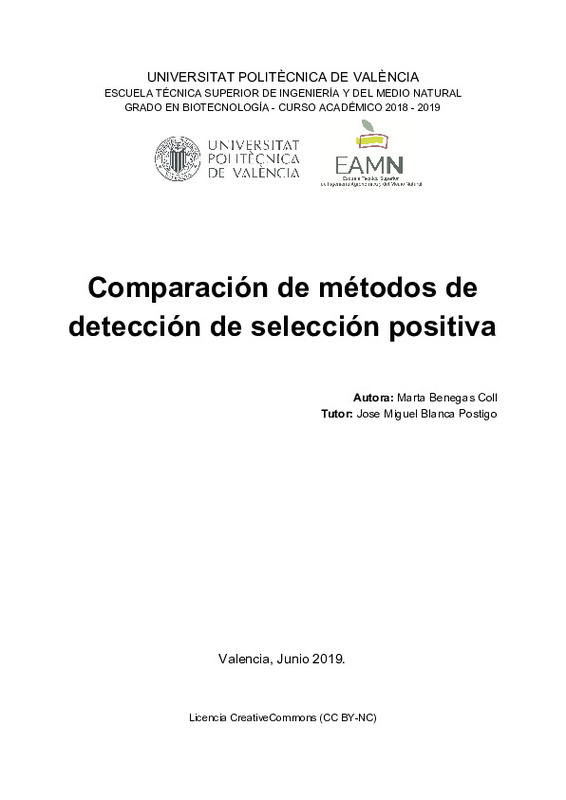JavaScript is disabled for your browser. Some features of this site may not work without it.
Buscar en RiuNet
Listar
Mi cuenta
Estadísticas
Ayuda RiuNet
Admin. UPV
Comparación de métodos de detección de selección positiva
Mostrar el registro completo del ítem
Benegas Coll, M. (2019). Comparación de métodos de detección de selección positiva. http://hdl.handle.net/10251/123911
Por favor, use este identificador para citar o enlazar este ítem: http://hdl.handle.net/10251/123911
Ficheros en el ítem
Metadatos del ítem
| Título: | Comparación de métodos de detección de selección positiva | |||
| Autor: | Benegas Coll, Marta | |||
| Director(es): | ||||
| Entidad UPV: |
|
|||
| Fecha acto/lectura: |
|
|||
| Resumen: |
[ES] Las especies cultivadas son fruto de un proceso de domesticación en el que los agricultores han ejercido una selección artificial en búsqueda de caracteres agronómicos de interés. Este proceso de selección afecta a ...[+]
[EN] Cultivated species are the result of a domestication process in which farmers have made an artificial selection, searching for agronomic characters of interest. This selection process affects the structure of the ...[+]
|
|||
| Palabras clave: |
|
|||
| Derechos de uso: | Reconocimiento - No comercial (by-nc) | |||
| Editorial: |
|
|||
| Titulación: |
|
|||
| Tipo: |
|
recommendations
Este ítem aparece en la(s) siguiente(s) colección(ones)
-
ETSIAMN - Trabajos académicos [3545]
Escuela Técnica Superior de Ingeniería Agronómica y del Medio Natural





![ZIP archive [ZIP]](/themes/UPV/images/zip.png)


